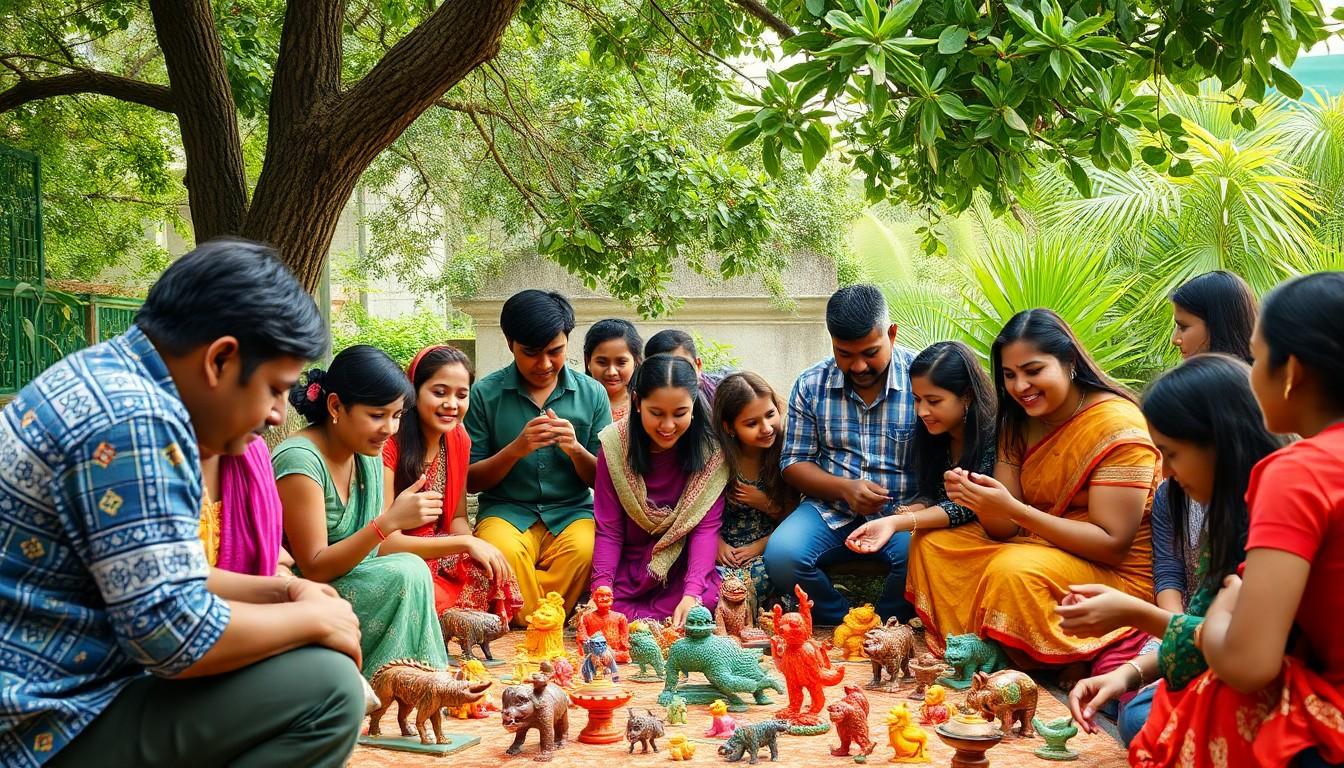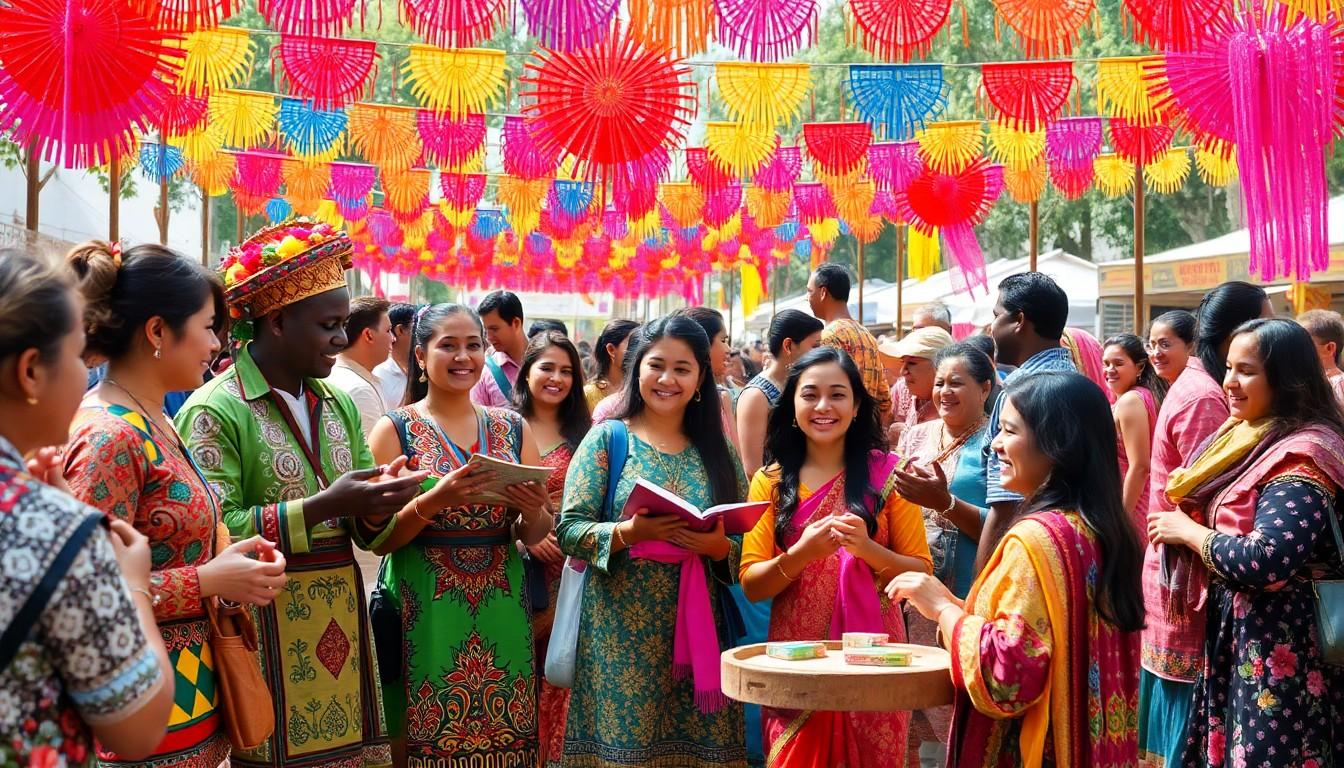In a world filled with quirky terms and fascinating concepts, “bhlazewiddabhooty” stands out like a neon sign at a black-and-white party. This whimsical word might sound like a spell from a wizarding school, but it’s more than just a tongue-twister; it’s a delightful dive into a unique cultural phenomenon.
Overview of Bhlazewiddabhooty
Bhlazewiddabhooty captures interest through its whimsical nature. This term reflects a rich tapestry of cultural narratives and historical evolution.
Historical Context
Bhlazewiddabhooty traces its origins to playful linguistic expressions used in various communities. Variations of the term appeared in folklore and oral traditions, emphasizing its roots in storytelling. Historians note its association with regional cultural festivals, where it often represented a celebration of creativity and expression. Researchers highlight its evolution, linking changes in usage to the dynamics of language and cultural exchange.
Cultural Significance
Bhlazewiddabhooty embodies the spirit of quirky language, transcending mere playfulness. It serves as a symbol of cultural identity, fostering a sense of belonging among those familiar with the term. Communities embrace it during gatherings and artistic expressions, showcasing their appreciation for unique linguistic creativity. Artists and performers often incorporate bhlazewiddabhooty into their works, enriching cultural narratives and enhancing cultural connections.
Key Characteristics of Bhlazewiddabhooty

Bhlazewiddabhooty exhibits unique physical characteristics that contribute to its charm. This term often influences various artistic representations. Colors associated with it range widely, reflecting regional palettes that showcase creativity. Patterns tend to be intricate, capturing the playful nature of the word. Textures may vary from smooth to rough, mirroring the diversity found in cultural expressions. Sizes differ as well, from larger installations to compact forms, allowing for versatility in artistic interpretation.
Behaviorally, bhlazewiddabhooty showcases a playful spirit. Its use in community gatherings highlights the term’s adaptability and social significance. Participants often express joy through its incorporation into games or storytelling. Reactions can vary, with laughter being a common response in social contexts. Engagement encourages creativity, making it a focal point for artistic endeavors. Community members embrace this term as a shared experience, reinforcing bonds and fostering a sense of belonging.
Uses and Applications
Bhlazewiddabhooty finds expression through various traditional and modern applications, enriching cultural narratives and contemporary creativity.
Traditional Uses
Communities often celebrate bhlazewiddabhooty during festivals. It serves as a centerpiece in storytelling, allowing artists to weave patterns of imagination. In folklore, this term embodies the essence of playful language, passed down generations. Participants engage in games that emphasize creativity, making gatherings lively and interactive. Artists incorporate bhlazewiddabhooty into craftwork, enhancing local artistry and reflecting cultural identity. Regional rituals frequently feature this term, fostering a sense of belonging among participants. Festivals also utilize bhlazewiddabhooty to commemorate shared history, linking past traditions with current expressions.
Modern Innovations
In today’s context, bhlazewiddabhooty evolves through multimedia expressions. Designers often integrate this term into contemporary art, merging tradition with innovation. Social media platforms showcase its playful nature, inviting creators to share unique interpretations. Artists utilize bhlazewiddabhooty in performance art, generating excitement among audiences. Workshops increasingly explore its cultural significance, educating younger generations. Clothing brands also experiment with patterns inspired by bhlazewiddabhooty, making cultural symbols accessible in everyday fashion. Overall, these modern applications help preserve the term’s essence while adapting to current cultural trends.
Comparisons with Similar Concepts
Bhlazewiddabhooty shares intriguing parallels with several cultural constructs, enriching the conversation around playful language and identity.
Differentiating Factors
Distinctive attributes set bhlazewiddabhooty apart from other whimsical terms. Its specific cultural ties root it deeply in regional folklore, unlike more generic playful language used globally. Unique narrative styles often accompany bhlazewiddabhooty, highlighting community traditions. Artists frequently incorporate bhlazewiddabhooty into their creative expressions, emphasizing its significance in local storytelling. This term embodies a vibrant spirit, while similar concepts may lack such strong connections to community identity.
Similarities and Contrasts
Bhlazewiddabhooty and other playful expressions commonly promote creativity and community bonding. Both foster connections among participants during gatherings. Joyful interactions are evident in activities where these terms are used, revealing a universal appreciation for language play. Notably, they encourage shared experiences within communities. Bhlazewiddabhooty, however, maintains a specific cultural context that may not apply to all playful terms. While both engage users emotionally, bhlazewiddabhooty’s unique roots anchor it firmly in cultural significance, distinguishing it from broader playful expressions.
Conclusion
Bhlazewiddabhooty stands as a vibrant testament to the power of playful language in cultural expression. Its whimsical charm and rich narrative weave together the threads of community identity and creativity. By embracing this unique term, individuals not only celebrate their heritage but also foster connections that transcend generations.
As bhlazewiddabhooty continues to evolve through modern interpretations, it remains a crucial element in artistic endeavors and social gatherings. This enchanting word invites everyone to engage in the joy of storytelling and creativity, ensuring that its legacy thrives in both traditional and contemporary contexts.




